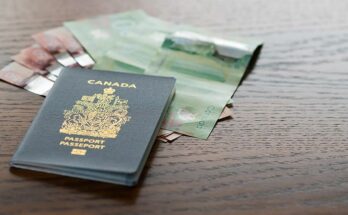Canada’s Express Entry system is one of the most efficient pathways for skilled workers seeking permanent residency. It’s a points-based system introduced by Immigration, Refugees, and Citizenship Canada (IRCC) to manage and streamline the applications for three primary immigration programs: the Federal Skilled Worker Program, the Federal Skilled Trades Program, and the Canadian Experience Class.
If you’re dreaming of living and working in Canada, this system simplifies the process. Plus, with its competitive structure, it ensures that only highly qualified applicants are invited to apply.
Why Choose Express Entry for Immigration?
Express Entry is a game-changer for aspiring immigrants. Why? It’s fast, transparent, and offers a clear path to permanent residency. Unlike traditional immigration processes, which can take years, Express Entry applicants can receive an invitation to apply (ITA) in as little as six months. Additionally, it’s a great choice for those aiming to integrate into the Canadian job market quickly, especially with visa sponsorship options available for skilled workers.
Benefits of the Express Entry System
Faster Processing Times
The Express Entry system is renowned for its speed. While conventional immigration routes may drag on for years, the Express Entry process can lead to permanent residency within six to twelve months. This expedited timeline makes it the preferred choice for skilled professionals looking to settle in Canada.
Opportunity for Permanent Residency
One of the standout features of Express Entry is its potential to grant permanent residency. With PR status, you gain access to Canadian healthcare, education, and the ability to live and work anywhere in the country. Plus, it’s a stepping stone toward Canadian citizenship.
Visa Sponsorship and Job Opportunities
Did you know that Express Entry applicants can benefit from employer-sponsored visas? Many Canadian employers are eager to hire skilled international workers. Sectors such as healthcare, IT, engineering, and trades are actively seeking talent, making visa sponsorship a realistic and lucrative option for Express Entry candidates.
Eligibility Criteria for Canada Express Entry
Minimum Requirements for Applicants
To qualify for Express Entry, applicants must meet specific criteria:
- Language Proficiency: Proof of strong English or French language skills through recognized tests like IELTS or TEF.
- Education: A minimum of a high school diploma, with higher qualifications increasing your chances.
- Work Experience: At least one year of skilled work experience in an eligible occupation.
- Proof of Funds: Demonstrating you have sufficient funds to support yourself and your family in Canada.
Key Factors Affecting Your Comprehensive Ranking System (CRS) Score
Your CRS score determines your ranking in the Express Entry pool. Factors that influence your score include:
- Age (younger applicants score higher)
- Education level (higher degrees earn more points)
- Work experience (Canadian experience is particularly valued)
- Language proficiency (scoring well on IELTS or TEF is crucial)
- Job offers or provincial nominations
Step-by-Step Guide to Applying for Express Entry
Step 1 – Determine Your Eligibility
Before diving into the process, use the CRS tool provided by IRCC. This tool helps assess your eligibility based on age, education, work experience, and language skills. If your score meets the cut-off, you can move on to the next step.
Step 2 – Create Your Express Entry Profile
Once you’re eligible, create your profile on the IRCC portal. This involves providing detailed information about your background, skills, and qualifications.
Required Documents for Profile Creation
- Passport or travel document
- Language test results (IELTS, TEF, etc.)
- Educational Credential Assessment (ECA)
- Proof of work experience
- Proof of funds
Step 3 – Get Your Language Test Results
Your language proficiency plays a significant role in boosting your CRS score. Take an approved language test like IELTS (English) or TEF (French). Aim for the highest possible scores to increase your competitiveness.
Accepted Language Tests
- IELTS (General Training)
- CELPIP (General Test)
- TEF Canada (French)
- TCF Canada (French)
Step 4 – Educational Credential Assessment (ECA)
An ECA verifies that your educational qualifications are equivalent to Canadian standards. Organizations like WES (World Education Services) or ICAS can provide this assessment.
Step 5 – Improve Your CRS Score
If your CRS score is below the cut-off, take steps to improve it:
- Gain more work experience
- Pursue higher education or certifications
- Achieve higher scores in language tests
- Seek a job offer from a Canadian employer or a provincial nomination
Receiving an Invitation to Apply (ITA)
What Happens After You Get an ITA?
If you’re among the top-ranked candidates in the Express Entry pool, you’ll receive an Invitation to Apply (ITA) for permanent residency. This is a major milestone! Once you receive the ITA, you have 60 days to submit a complete application with all the required supporting documents.
At this stage, accuracy and thoroughness are key. Missing documents or incorrect information could lead to delays or even rejection. It’s recommended to double-check everything before submitting.
Submitting the Required Documents
When submitting your application, the following documents are mandatory:
- Proof of Identity: Copies of your passport or travel document.
- Language Test Results: Your test scores from IELTS, CELPIP, TEF, or TCF.
- Educational Credential Assessment (ECA): For applicants with foreign education.
- Work Experience Proof: Letters from previous employers detailing your job duties and duration.
- Police Clearance Certificates: Required from every country you’ve lived in for six months or more since turning 18.
- Medical Examination Results: Conducted by a panel physician approved by IRCC.
ITA Validity Period
The ITA is valid for 60 days, and this timeframe cannot be extended. It’s crucial to gather all documents promptly and submit them within the deadline to avoid losing your chance.
Visa Sponsorship Opportunities in Canada
What is Visa Sponsorship?
Visa sponsorship refers to when a Canadian employer supports a foreign worker’s visa application, facilitating their move to Canada. This can be a significant advantage for Express Entry applicants, as job offers backed by sponsorship add extra points to your CRS score.
Finding Employers Who Offer Sponsorship
Securing a sponsored job offer requires research and networking. Key resources include:
- Job Portals: Websites like Job Bank Canada, Indeed, and Glassdoor often list jobs offering sponsorship.
- Recruitment Agencies: Specialized agencies connect skilled workers with employers willing to sponsor visas.
- Networking Platforms: Use LinkedIn to network with Canadian employers in your industry.
Sectors with High Demand for Sponsored Workers
Certain industries in Canada are actively seeking skilled professionals. Common fields offering visa sponsorship include:
- Healthcare (nurses, doctors, and medical technicians)
- Information Technology (software developers, IT analysts)
- Skilled Trades (electricians, plumbers, welders)
- Education (teachers and academic staff)
- Agriculture (farm workers, food processors)
Challenges and Solutions During the Application Process
Common Roadblocks
Applying for Express Entry isn’t always smooth sailing. Some common challenges include:
- Low CRS Score: Not meeting the cut-off can delay your application.
- Document Errors: Missing or incorrect documents can lead to rejection.
- Language Test Struggles: Achieving high scores in IELTS or TEF can be challenging for some applicants.
How to Overcome Rejections or Low CRS Scores
Don’t panic if you face setbacks. Here’s how to improve:
- Enhance Your Profile: Gain additional work experience or higher education.
- Provincial Nominee Program (PNP): Explore PNPs for provinces offering pathways for candidates with lower CRS scores.
- Language Improvement: Retake language tests and aim for better results.
- Reapply with Accuracy: If your application was rejected, address the issues and submit a stronger application.
Final Steps After Moving to Canada
Acquiring Your Permanent Resident (PR) Card
Once you land in Canada, your first step is to apply for your PR card. This card serves as proof of your permanent resident status and allows you to travel in and out of Canada freely. PR cards are typically issued within a few months of arrival.
Settling into Canadian Life
Moving to a new country can be both exciting and overwhelming. Here’s how to settle in quickly:
- Find Accommodation: Look for housing through rental websites or local classifieds.
- Open a Bank Account: Choose a bank that offers services for newcomers.
- Get a SIN: Apply for a Social Insurance Number (SIN) to work in Canada.
Accessing Healthcare and Social Benefits
As a permanent resident, you’re entitled to Canadian healthcare and other social benefits. Register for health insurance in your province or territory to access free or subsidized medical care.
Conclusion
Canada’s Express Entry system is a streamlined, transparent, and efficient way to achieve your dream of living in Canada. From eligibility assessments to visa sponsorship opportunities, the process is designed to attract skilled individuals who can contribute to the country’s economy. By following the step-by-step guide and preparing thoroughly, you can navigate the system confidently and increase your chances of success. Start your journey today and unlock a world of opportunities in the Great White North!
FAQs
1. What is the minimum CRS score needed to qualify for Express Entry?
The minimum CRS score varies with each draw. Typically, scores range between 450 and 500 points, but Provincial Nominee Programs (PNPs) can help lower this threshold.
2. Can I apply for Express Entry without a job offer?
Yes, a job offer isn’t mandatory for Express Entry. However, having one can boost your CRS score and improve your chances of receiving an ITA.
3. How long does the Express Entry process take?
Once you receive an ITA, the process typically takes six months or less for most applications. However, timelines may vary based on individual cases.
4. Is visa sponsorship available for all types of jobs?
No, visa sponsorship is generally limited to high-demand occupations and skilled jobs. Industries like healthcare, IT, and skilled trades are more likely to offer sponsorship.
5. Can I include my family members in my Express Entry application?
Yes, you can include your spouse or common-law partner and dependent children in your application. Their eligibility will be assessed alongside yours.



